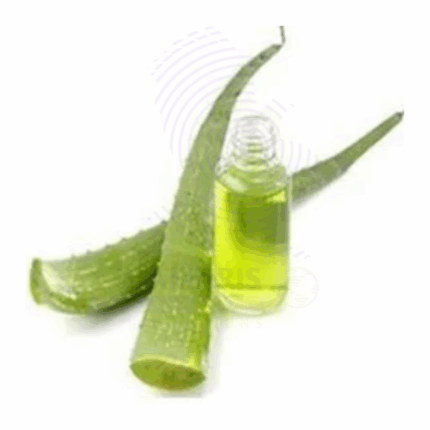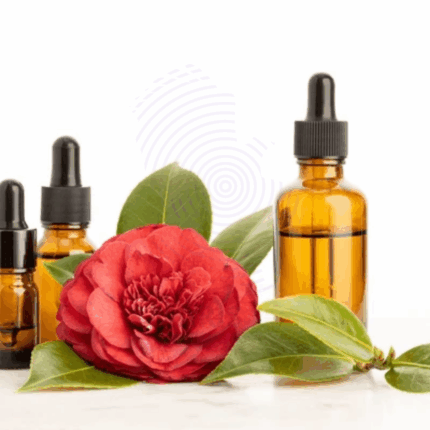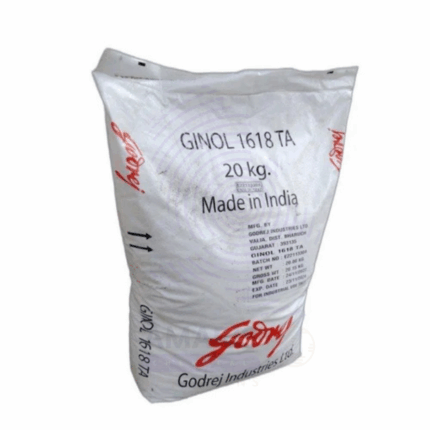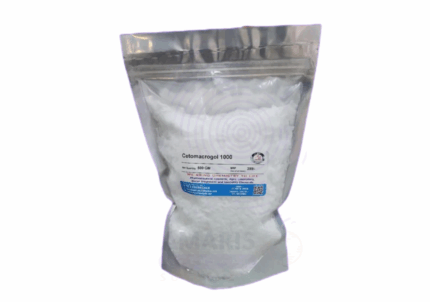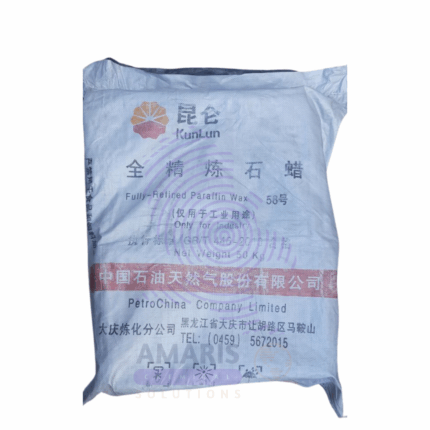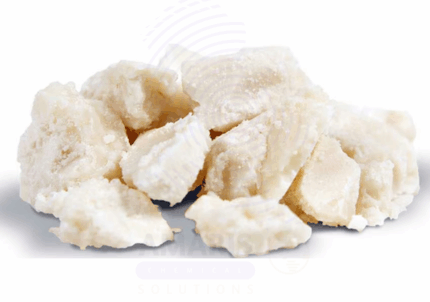Meadowfoam Oil
Meadowfoam Oil is a premium-quality, cold-pressed carrier oil extracted from the seeds of the Limnanthes alba plant, native to the Pacific Northwest of the United States. Known for its exceptional oxidative stability and long shelf life, Meadowfoam Oil is rich in long-chain fatty acids such as eicosenoic acid, docosenoic acid, and behenic acid. It is a lightweight, non-greasy oil that absorbs easily into the skin, leaving a soft, velvety feel without clogging pores. Odorless and pale yellow in color, this oil is prized in cosmetics and personal care products for its emollient, moisturizing, and barrier-repairing properties. Meadowfoam Oil also enhances the performance and stability of other oils and active ingredients, making it a highly functional base in advanced formulations. Its versatility, stability, and gentle nature have made it a key ingredient in skincare, haircare, makeup, and wellness products.
Meadowfoam Oil
Primary Uses
- Aromatherapy & Wellness
- Used as a stable carrier oil to dilute essential oils in massage and wellness applications.
- Incorporated in facial oils and body serums for its nourishing and non-comedogenic profile.
- Included in aromatherapy blends to deliver actives and improve skin penetration.
- Used in stretch mark and scar blends due to its moisturizing and skin-smoothing benefits.
- Applied in wellness rollers and skin repair oils for barrier support and soothing effects.
- Cosmetics and Personal Care
- Added to moisturizers, lotions, and creams for long-lasting hydration and emollient properties.
- Used in lip balms and lipsticks for enhanced texture, stability, and moisture retention.
- Incorporated into hair serums, conditioners, and scalp treatments for softness, shine, and frizz control.
- Included in sunscreens and anti-aging formulas to reduce moisture loss and boost product integrity.
- Blended into foundations, BB creams, and makeup bases to improve spreadability and skin-feel.
- Added to beard oils and shaving products for glide, nourishment, and a smooth finish.
- Used in sensitive skin formulas due to its non-irritating, hypoallergenic profile.
- Topical Applications
- Applied directly to dry or cracked skin to restore softness and hydration.
- Used in nail and cuticle treatments to condition and prevent brittleness.
- Incorporated in after-sun care products for soothing and replenishing sun-exposed skin.
- Included in baby care products for gentle moisturization and protection.
- Blended in scar and blemish care formulas to support healing and reduce dryness.
Secondary Uses
- Cleaning and Detergent Products
- Added to skin-friendly, plant-based soaps and cleansers for moisturizing properties.
- Used in luxury household soaps and fabric softeners for gentle skin contact formulations.
- Spa and Therapeutic Products
- Incorporated in body oils, massage blends, and therapeutic balms for hydration and slip.
- Used in exfoliating scrubs and bath oils for a smooth, silky post-treatment feel.
- Blended into aromatherapy and mindfulness rollers as a stabilizing base oil.
- Fragrance and Ambient Scenting
- Used as a base oil in alcohol-free roll-on perfumes and scented body oils.
- Added to fragrance blends to improve skin feel and enhance aroma retention.
- Used in solid perfumes and balm-based fragrances for structure and glide.
- Pet and Animal Care
- Included in pet grooming balms and coat conditioners for shine and moisture.
- Used in paw salves and dry skin treatments for pets (under veterinary guidance).
- Employed in pet-safe soap formulations for gentle cleansing.
- Industrial and Specialty Applications
- Used in advanced formulations requiring oxidation-resistant carrier oils.
- Employed in bio-based lubricants, polishes, and emollient-rich industrial cleaners.
- Incorporated in formulations where long shelf life and heat resistance are desired.
1. Basic Identification Attributes
- Botanical Name: Limnanthes alba
- Common/Trade Name: Meadowfoam Oil
- INCI Name: Limnanthes Alba (Meadowfoam) Seed Oil
- CAS Number: 153065-40-8
- HS Code: 1515.90
- Synonyms: Meadowfoam Seed Oil
2. Physical & Chemical Properties
- Physical State: Liquid carrier oil
- Color & Odor: Clear to pale yellow; virtually odorless
- Solubility: Insoluble in water; soluble in alcohol and oils
- Refractive Index: 1.470 – 1.490
- Specific Gravity: 0.910 – 0.930
- Main Components: Eicosenoic acid, docosenoic acid, behenic acid, oleic acid
3. Safety & Hazard Attributes
- GHS Classification: Not classified as hazardous; considered safe for topical use
- Toxicity: Low toxicity; external use only
- Exposure Limits: Refer to Safety Data Sheet (SDS)
- Allergen Information: Typically hypoallergenic; patch testing recommended for sensitive users
4. Storage & Handling Attributes
- Storage Conditions: Store in a cool, dark, dry place; avoid direct sunlight and high heat
- Container Type: Amber glass or aluminum containers with airtight lids
- Shelf Life: 24 to 36 months when stored properly
- Handling Precautions: Avoid contamination; use clean, dry equipment during handling
5. Regulatory & Compliance Attributes
- Compliant with IFRA standards and cosmetic safety regulations
- Produced in GMP-certified and FDA-registered facilities
- Not classified as hazardous under international shipping standards
6. Environmental & Health Impact
- Biodegradability: Readily biodegradable under standard environmental conditions
- Ecotoxicity: Low toxicity to aquatic life in diluted concentrations
- Bioaccumulation: Not expected to bioaccumulate
Safety Handling Precautions
- PPE Required: Gloves recommended during industrial processing
- Handling Guidelines: Ensure containers are tightly sealed and stored in controlled environments
First Aid Measures
- Inhalation: Not typically hazardous; move to fresh air if irritation occurs
- Skin Contact: Safe for most skin types; wash with soap and water if irritation arises
- Eye Contact: Rinse with water for several minutes if eye exposure occurs
- Ingestion: Non-toxic in small amounts; seek medical attention for large quantities
Firefighting Measures
- Fire Hazards: Combustible oil; avoid open flames and ignition sources
- Extinguishing Media: Dry chemical, foam, carbon dioxide, or water mist
- Special Precautions: Use protective gear; avoid inhaling combustion vapors
- Hazardous Combustion Products: Carbon monoxide, carbon dioxide


 Preservatives(food)
Preservatives(food) Flavor Enhancers
Flavor Enhancers Acidulants
Acidulants Sweeteners
Sweeteners Antioxidants
Antioxidants Colorants(food)
Colorants(food) Nutraceutical Ingredients (food)
Nutraceutical Ingredients (food) Nutrient Supplements
Nutrient Supplements Emulsifiers
Emulsifiers
 Collectors
Collectors Dust Suppressants
Dust Suppressants Explosives and Blasting Agents
Explosives and Blasting Agents Flocculants and Coagulants
Flocculants and Coagulants Frothers
Frothers Leaching Agents
Leaching Agents pH Modifiers
pH Modifiers Precious Metal Extraction Agents
Precious Metal Extraction Agents
 Antioxidants(plastic)
Antioxidants(plastic) Colorants (Pigments, Dyes)
Colorants (Pigments, Dyes) Fillers and Reinforcements
Fillers and Reinforcements Flame Retardants
Flame Retardants Monomers
Monomers Plasticizers
Plasticizers Polymerization Initiators
Polymerization Initiators Stabilizers (UV, Heat)
Stabilizers (UV, Heat)
 Antifoaming Agents
Antifoaming Agents Chelating Agents
Chelating Agents Coagulants and Flocculants
Coagulants and Flocculants Corrosion Inhibitors
Corrosion Inhibitors Disinfectants and Biocides
Disinfectants and Biocides Oxidizing Agents
Oxidizing Agents pH Adjusters
pH Adjusters Scale Inhibitors( water)
Scale Inhibitors( water)
 Antioxidants(cosmetic)
Antioxidants(cosmetic) Emollients
Emollients Fragrances and Essential Oils
Fragrances and Essential Oils Humectants
Humectants Preservatives
Preservatives Surfactants(cosmetic)
Surfactants(cosmetic) Thickeners
Thickeners UV Filters
UV Filters
 Fertilizers
Fertilizers Soil Conditioners
Soil Conditioners Plant Growth Regulators
Plant Growth Regulators Animal Feed Additives
Animal Feed Additives Biostimulants
Biostimulants Pesticides (Herbicides, Insecticides, Fungicides)
Pesticides (Herbicides, Insecticides, Fungicides)
 Active Pharmaceutical Ingredients (APIs)
Active Pharmaceutical Ingredients (APIs) Excipients
Excipients Solvents(pharmaceutical)
Solvents(pharmaceutical) Antibiotics
Antibiotics Antiseptics and Disinfectants
Antiseptics and Disinfectants Vaccine Adjuvants
Vaccine Adjuvants Nutraceutical Ingredients (pharmaceutical)
Nutraceutical Ingredients (pharmaceutical) Analgesics & Antipyretics
Analgesics & Antipyretics
 Analytical Reagents
Analytical Reagents Solvents(lab)
Solvents(lab) Chromatography Chemicals
Chromatography Chemicals Spectroscopy Reagents
Spectroscopy Reagents microbiology-and-cell-culture-reagents
microbiology-and-cell-culture-reagents Molecular Biology Reagents
Molecular Biology Reagents Biochemical Reagents
Biochemical Reagents Inorganic and Organic Standards
Inorganic and Organic Standards Laboratory Safety Chemicals
Laboratory Safety Chemicals Specialty Laboratory Chemicals(Special Laboratory Equipment)
Specialty Laboratory Chemicals(Special Laboratory Equipment)
 Demulsifiers
Demulsifiers Hydraulic Fracturing Fluids
Hydraulic Fracturing Fluids Scale Inhibitors(oil)
Scale Inhibitors(oil) Surfactants(oil)
Surfactants(oil) Drilling Fluids
Drilling Fluids
 Dyes and Pigments
Dyes and Pigments Bleaching Agents
Bleaching Agents Softening Agents
Softening Agents Finishing Agents
Finishing Agents Antistatic Agents
Antistatic Agents
 Admixtures
Admixtures Waterproofing Agents
Waterproofing Agents Sealants and Adhesives
Sealants and Adhesives Curing Compounds
Curing Compounds Concrete Repair Chemicals
Concrete Repair Chemicals Anti-Corrosion Coatings
Anti-Corrosion Coatings
 Surfactants(cleaning)
Surfactants(cleaning) Builders
Builders Enzymes
Enzymes Solvents (Cleaning)
Solvents (Cleaning) Fragrances
Fragrances
 Electronic Chemicals
Electronic Chemicals Catalysts
Catalysts Lubricants
Lubricants Photographic Chemicals
Photographic Chemicals Refrigerants
Refrigerants Automotive chemicals
Automotive chemicals Pyrotechnic Chemicals
Pyrotechnic Chemicals
 Biodegradable Surfactants
Biodegradable Surfactants Bio-based Solvents
Bio-based Solvents Renewable Polymers
Renewable Polymers Carbon Capture Chemicals
Carbon Capture Chemicals Wastewater Treatment Chemicals
Wastewater Treatment Chemicals
 Pigments
Pigments Solvents(paint)
Solvents(paint) Specialty Coatings
Specialty Coatings Binders/Resins
Binders/Resins Additives
Additives Driers
Driers Anti-Corrosion Agents
Anti-Corrosion Agents Functional Coatings
Functional Coatings Application-Specific Coatings
Application-Specific Coatings
 Fresh Herbs
Fresh Herbs Ground Spices
Ground Spices Whole Spices
Whole Spices Spice Blends
Spice Blends Dried Herbs
Dried Herbs
 Leavening Agents
Leavening Agents Dough Conditioners
Dough Conditioners Flour Treatments
Flour Treatments Fat Replacers
Fat Replacers Decoratives
Decoratives Preservatives(baking)
Preservatives(baking)
 Plasticizers & Softeners
Plasticizers & Softeners Reinforcing Agents
Reinforcing Agents Adhesion Promoters
Adhesion Promoters Vulcanizing Agents
Vulcanizing Agents Antidegradants
Antidegradants Blowing Agents
Blowing Agents Fillers & Extenders
Fillers & Extenders Accelerators & Retarders
Accelerators & Retarders


